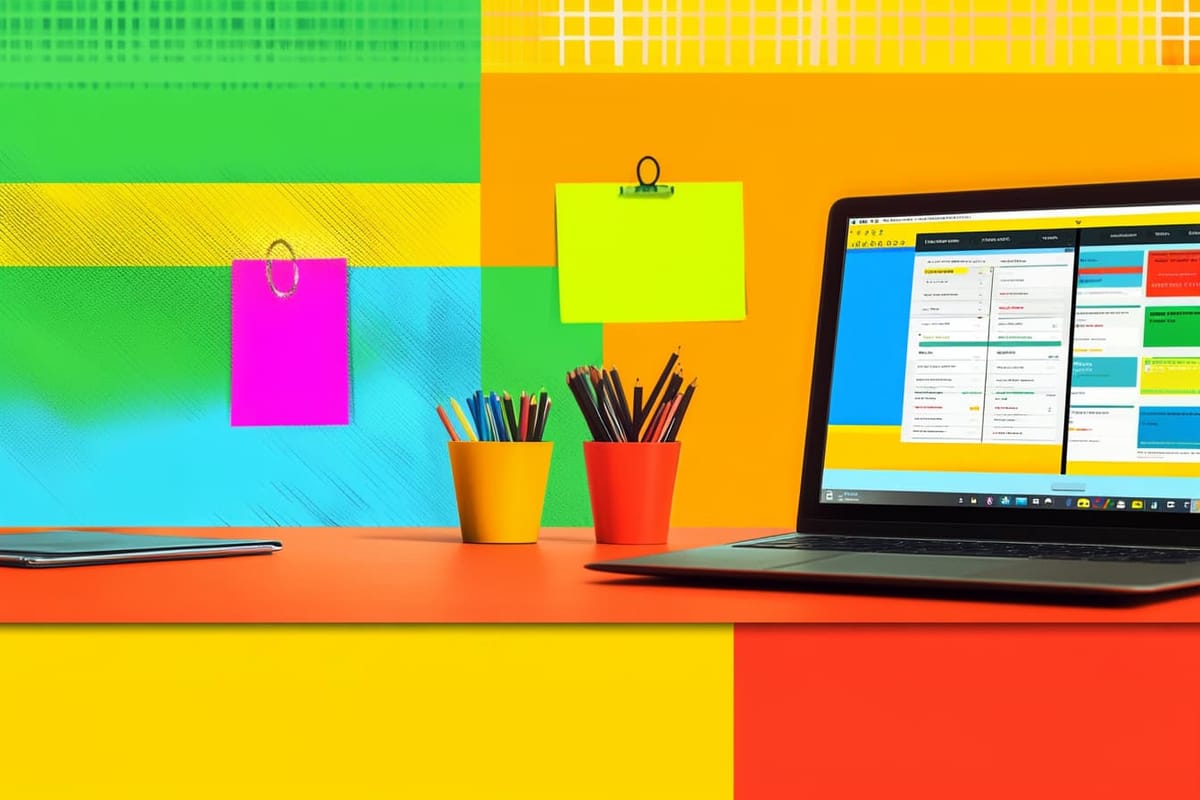How to Stand Out as a Freelancer
Be known for something.

When I first started freelancing, I knew I was entering a crowded arena. Calls for freelance writers on platforms like LinkedIn would get dozens (if not hundreds) of replies from freelancers, eagerly sharing their portfolios.
But the freelancers who stood out in my mind were those who continuously promoted themselves — without sounding cocky or desperate. Kat Boogaard is a great example. With more than 10 years of experience, she shares relatable posts about the ups and downs of freelancing, such as:
What I say: "Looking forward to your feedback!"
What I mean: "Looking forward to taking every single one of your edits super personally!"
Her posts are funny to both clients and fellow freelancers, so she gets a lot of engagement. Kat is smart — she likely knows that engagement ultimately brings clients, since she'll appear more in people's feeds.
Many freelancers stand out for similar reasons. A sharp portfolio, clean website, and glowing testimonials are only a part of the puzzle. That's what potential clients look at after they've found you. But finding you — that discovery piece — is where you have to stand out in a sea of freelancers.
What “standing out” means for freelancers
Social media sites are overrun with people who proclaim to be "thought leaders" — experts in their fields that others should pay attention to. Sometimes their posts are interesting, and other times they're worthy of a gigantic eye roll. But, these people show up consistently and have a clear message. You know who they are and can usually identify the themes they regularly talk about. Kaitlyn Arford has made a name for herself by sharing freelance opportunities she finds on social media sites and advocating for pay transparency.
What's interesting about freelancing is that you don't have to (necessarily) showcase your expertise in your client work. For example, I'm not the strategist behind my clients' content — I only execute on decisions they have made internally. I could talk about the value of high-quality content, especially as a fintech writer, but I assume clients who hire me already know that (or they wouldn't have come to me in the first place).
Instead, I chose to become known for talking about tools, processes, and automation I use to operate my freelance business. It shows that I take my business seriously. Instead of showcasing specific knowledge, I'm showcasing a specific style: the ability to break down complex topics into easy-to-understand articles and social posts.
Rather than sound stuffy or focus solely on the type of work you do, you can become "known for a thing." Find a topic you care about and dig into it. Because, odds are, there are hundreds of other freelancers who can deliver the same type of work as you, so that won't help you stand out.
The whole point of standing out it to make yourself memorable. Potential clients may not need your services right now, but you want them to remember your name for the future.
4 Types of expert content you can create
Once you know what you want to be known for, the next step is figuring out how to communicate it.
Here are some types of content you can consider:
Curated insights
With this content, you'll amplify others' ideas and offer your perspective. This works well if you're a content newbie, since you're essentially piggybacking off another idea, rather than coming up with ideas from scratch.
Find content from other people, leave a comment offering your perspective. Then expand on that content and turn it into your own post.
Personal experiences
Share what you've learned from freelancing or throughout your career. I spent many years as a corporate exec and shared my ideas about product management, customer service, and executive management.
However, over time I found that these topics were too varied and I wasn't "known" for anything. So while personal experiences are relatable, they won't necessarily lead to a consistent message and help you stand out. The only thing I gained from talking about my past experiences is that I'm known as someone who pivoted from one career to another.
I realized that standing out required focus — not just sharing any story, but the right stories that tied back to who I am as a freelancer.
Educational content
"How-to" content can be really interesting, especially if you're good at explaining tools, processes, or workflows. People LOVE educational content and often engage with it or save it.
You can create screenshots, carousels, or short videos to add some variety to your content types.
This type of content is critical if you offer any type of done-for-you service, such as setting up tools, providing design services, or strategy. Freelance brand designer Joel Sousa creates videos for Instagram that show off his various projects and how he thinks about design.
Opinionated content
Opinionated content is the hardest to pull off... but can also be the most fun.
Opinionated content often gets a lot of engagement — from people who agree and disagree. At a minimum, you'll get people to notice you.
With opinionated content, you're positioning yourself as an expert: someone who knows enough about the industry to have opinions. The trick is to share opinions often enough so you're seen as a thought leader, but not cross the line into someone who only shares "hot takes" to get attention.

Getting started without overthinking
While most people will tell you to focus on a single platform, I don't think it's a good idea to put all of your eggs in one basket. (Just look at Twitter — it's not the same platform it was five years ago.)
Instead, you can focus on a primary platform — where it seems like your message is resonating the most — and cross-post to a secondary platform.
I don't think a copy-and-paste strategy works, since each platform has its own unique vibe. You should tweak the post. I do this automatically using Buffer and ChatGPT. My posts are first published to LinkedIn. The content automatically runs through ChatGPT with some instructions to re-format it for Threads. Then it is added to Buffer, where I add human editing to make sure it sounds like me before scheduling the reworked post.

Don't forget to promote yourself
"Standing out" means you should occasionally promote yourself and your services. Otherwise, people may know who you are, but not what you offer.
Talking about yourself constantly can seem disingenuous, especially if you end every post with "Want to learn more? Send me a DM." But you can — and should — remind people that you're available for hire.
I post a "re-introduction" (with a photo!) once a month. I also share links to free products I offer throughout the month, which gets people on my mailing list. You can also let people know that you have upcoming availability, if you work on longer-term projects or have the bandwidth to take on a new client.
Self-promotion can feel cringe, but it doesn't have to be. Do it in a thoughtful, genuine way — like you're talking to someone interesting you met at a conference. The person asks, "So, what do you do?" and you have to give a quick elevator pitch of yourself. Make the self-promotional pieces fun, or share some personal information about yourself — like a photo of your workspace or pet.
Standing out is about showing up with a clear message and confidence. When people remember your content because you have such a consistent message, they’ll remember who to hire.
Check out my free guide for creators looking to better manage their time and content across multiple platforms.








